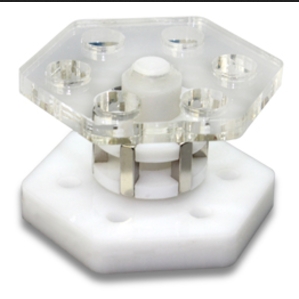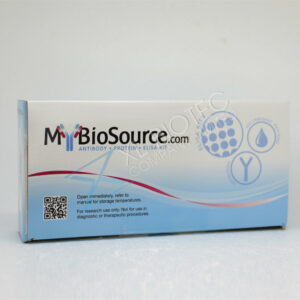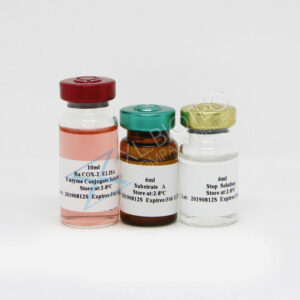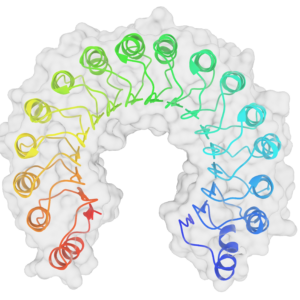For general laboratory use.
Unit Definition: One unit is defined as the amount of the enzyme required to catalyze the incorporation of 10 nmol of dNTP into an acid-insoluble form in 30 minutes at 74 °C.
Shipping: shipped on gel packs
Storage Conditions: store at -20 °C
avoid freeze/thaw cycles
Shelf Life: 12 months
Form: liquid
Concentration: 2.5 units/μl
Description:
Pfu-X Core Kit contains all reagents required for PCR (except template and primer) in one box combining simple handling with high flexibility. The premium quality polymerase, ultrapure dNTPs and the optimized complete reaction buffer ensure superior amplification results.
Pfu-X Polymerase is the ideal choice for applications where the efficient amplification of DNA with highest fidelity is required.
The enzyme is a genetically engineered Pfu DNA polymerase, showing a 2-fold higher accuracy and an increased processivity, resulting in shorter elongation times.
The enzyme catalyzes the polymerization of nucleotides into duplex DNA in 5’→3′ direction but does not possess a 5’→3′ exonuclease replacement activity. Its inherent 3’→5′ exonuclease proofreading activity results in a greatly increased fidelity of DNA synthesis compared to Taq polymerase. Pfu-X Polymerase-generated PCR fragments are blunt-ended.
The enzyme is highly purified and free of bacterial DNA.
Fidelity of the enzyme:
Pfu-X Polymerase is characterized by a 50-fold higher fidelity compared to Taq polymerase and a 2-fold higher fidelity compared to standard Pfu polymerase.
ERPfu-X Polymerase = 0.25 x 10-6
The error rate (ER) of a PCR reaction is calculated using the equation ER = MF/(bp x d), where MF is the mutation frequency, bp is the number of base pairs of the fragment and d is the number of doublings
(2d = amount of product / amount of template).
Content:
| Component | PCR-237S | PCR-237L |
| Pfu-X Polymerase 2.5 units/μl in storage buffer* red cap |
40 μl 100 units |
200 μl 500 units |
| dNTP Mix 10 mM each dATP, dCTP, dGTP, dTTP white cap |
100 μl | 500 μl |
| Pfu-X Buffer 10x conc. green cap |
500 μl | 2 x 1.2 ml |
| PCR-grade Water white cap |
2 x 1,2 ml | 2 x 6 ml |
* (50 % Glycerol, 50 mM Tris-HCl pH 8.0, 0.1 mM EDTA, 1 mM DTT 0.1 % Tween 20, 0.1 % Nonidet P-40)
Recommended 50 μl PCR assay:
| 5 μl | 10x Pfu-X Buffer | green cap |
| 1 μl | dNTP Mix | white cap |
| 0.4 μM | each Primer | – |
| 1 – 100 ng | template DNA | – |
| 0.5 μl (1.25 units) |
Pfu-X Pol | red cap |
| Fill up to 50 μl | PCR-grade water | – |
Please note that it is essential to add the polymerase as last component.
Recommended cycling conditions:
Three-step standard protocol
| initial denaturation |
95 °C | 2 min | 1x |
| denaturation | 95 °C | 20 sec | 25-30x |
| annealing1) | 50 – 68 °C | 30 sec | 25-30x |
| elongation2) | 68 °C | 1 min/kb | 25-30x |
| final elongation |
68 °C | 1 min/kb | 1x |
Two-step protocol for amplification of longer fragments (>3 kb)
Please note that for performing two-step cycling a sufficiently high primer Tm is necessary. If Tm of primers is below 65 °C or two-step PCR does not yield a sufficient product quality the three-step cycling protocol is recommended.
| initial denaturation |
95 °C | 2 min | 1x |
| denaturation | 95 °C | 20 sec | 25-30x |
| annealing/ elongation1,2) |
68 °C | 30 sec/kb | 25-30x |
| final elongation |
68 °C | 30 sec/kb | 1x |
1)The annealing temperature depends on the melting temperature of the primers used.
2)The elongation time depends on the length of the fragments to be amplified. A time of 1 min/kb is recommended.
For optimal specificity and amplification an individual optimization of the recommended parameters may be necessary for each new template DNA and/or primer pair.
Ligase-free Cloning
Ligase-free Cloning is based on a cloning technique invented by Quan and Tian in 2009. It offers a number of advantages over conventional cloning methods. The system:
- works with any vector that can be linearized
- allows efficient cloning even into blunt end vectors
- allows directed cloning into single-cut vectors
- allows fast and easy preparation of vector and insert with no or only few purification steps
- does not require to dephosphorylate the vector
- allows the use of any restriction enzyme that linearizes the vector even if its recognition site(s) are present in the insert
- does not need a ligation step
- does not add additional sequences to the plasmid or the insert
Principle (see Fig. 1)
Ligase-free Cloning is based on generation of inserts with homologous ends to the linearized vector.
In a circularization reaction, vector and insert anneal due to their homologous ends.
Using a specially selected DNA polymerase, the resulting single-stranded plasmids are recircularized.
These plasmids can directly be used for transformation. They still have two nicks each, which will be repaired by E. coli‘s endogenous DNA repair system and thus do not have to be ligated in vitro.
Supplements (to be provided by user)
Restriction enzymes
PCR purification kit
Gel extraction kit
Competent E. coli cells
Protocol
1. Vector preparation
Linearization with more than one enzyme will result in a higher percentage of positive clones. If the used restriction sites are not reconstructed after cloning and not present in the target fragment, the inactivation or purification steps can be omitted. Make sure the vector is linearized completely to reduce background in the transformation step (chapter 5).
1.1 With enzymes that can be heat inactivated:
- Linearize 500 ng of vector in 20 μl total reaction volume in Pfu-X Buffer, use at least 2 units of enzyme per μg of plasmid DNA
- Refer to Table 1 for optimal buffer concentrations for each enzyme
- Heat inactivate restriction enzymes
1.2 With enzymes that cannot be heat inactivated:
- Linearize 2 μg of vector in 40 μl total reaction volume in Pfu-X Buffer, use at least 2 units of enzyme per μg of plasmid DNA
- Refer to Table 1 for optimal buffer concentrations for each enzyme
- Remove enzymes with a DNA purification kit
Table 1: Optimal final Pfu-X Buffer concentrations for individual restriction enzymes
| Enzyme | Pfu-X Buffer | Enzyme | Pfu-X Buffer | Enzyme | Pfu-X Buffer |
| ApaI | 1x | HpaI | 1x | PvuII | 1x |
| ApaLI | 0.9x | KpnI | 1x | SalI | 2x |
| AsuII | 1x | MluI | 1x | ScaI | 1x |
| BamHI | 1x | MspCI | 2x | SlaI | 1x |
| BglII | 1x | NaeI | 1x | SmaI | 1x |
| BseAI | 1x | NcoI | 1x | SnaBI | 1x |
| BssHII | 1x | NdeI | 1x | SpeI | 1x |
| CspAI | 1x | NheI | 1x | SphI | 2x |
| DraI | 1x | NotI | 1x | SseBI | 1x |
| EcoRI | 1x | NruI | 1x | SspI | 1x |
| EcoRV | 1x | PstI | 1x | SstI | 1x |
| HindIII | 1x | PvuI | 1x | XbaI | 1x |
2. Primer design
- Primers need a 5′ extension with the same sequences as the ends of the linearized vector
- Melting temperature of the overlap should be in the range of 60-70 °C
- When linearizing the plasmid with enzymes that create sticky ends, use the strand with the overhang for calculations
- HPLC purification of the primers is recommended
Example: Vector was cut with NcoI and NotI. Vector is shown in lower case, primers in capitals, with the overlap in bold. Denote the primer sequence for amplification of the insert.
Forward primer:
CCTTGCCACCAGATCTGCCATGNNNNNN…
…gtgccttgccaccagatctgc
…cacggaacggtggtctagacggtac
Reverse primer:
ggccgccctcctcctcctttcttgttc…
cgggaggaggaggaaagaacaag…
…NNNNNNCCGGCGGGAGGAGGAGGAAAGA
3. Insert preparation
3.1 Standard preparation
- Perform PCR in 1x Pfu-X Buffer with 0.2 mM dNTPs and 1 μl of Pfu-X Polymerase per 100 μl of reaction volume and a final primer concentration of 1 μM for 25-30 cycles
- Set elongation temperature to 68 °C and elongation time to 1.5 min per 1000 bp
- Isolate fragment from agarose gel
3.2 Quick preparation
This works only if the PCR template does not have the same antibiotic resistance as the target vector, or if the PCR template is removed by Dpn I digestion.
- Perform PCR in 1x Pfu-X Buffer with 0.2 mM dNTP Mix and 1 μl of Pfu-X Polymerase per 100 μl of reaction volume and a final primer concentration of 125 nM for 25-30 cycles
- Further purification of the insert is not necessary
4. Circularization reaction
4.1 Components
Prepare the following reaction (20 μl volume):
- 100 ng of linearized vector
- 10-fold molar excess of insert
- 1x Pfu-X Buffer (note that fragment and/or vector may already contain buffer, add only that amount of buffer to reach 1x final concentration)
- 0.2 mM dNTP Mix
- 0.5 units Pfu-X Polymerase
- Add PCR-grade Water to a final volume of 20 μl
As a control, perform the same reaction without adding any insert.
4.2 Reaction conditions
- Step 1: 30 sec 94 °C
- Step 2: 30 sec 50 °C (depends on annealing temperature of the overlaps, 50 °C will work in most cases)
- Step 3: x min 68 °C (depends on vector or fragment size, whichever is larger, set to 1.5 min / 1000 bp)
- 10 cycles
5. Transformation
- Transform competent E. coli cells, using your standard transformation protocol, with 5 μl of the circularization reaction or the control
- Transformation with the reaction should yield 100-1000 colonies, of which 95-99 % are positive (less if the vector has not been cut efficiently)
- Transformation of the control usually gives 1-50 colonies and shows the amount of background from negative clones with non-linearized vector
”
Related products:
- Ready-to-Use Mixes / direct gel loading
- Ready-to-Use Mixes
- Thermophilic Polymerases
- Deoxynucleotides (dNTPs)
- Supplements
- Primers and Oligonucleotides
- DNA Ladders
| Vendor | เยน่า ไบโอไซเอนซ์ |
|---|
Related products
อณูชีววิทยา
อณูชีววิทยา
อณูชีววิทยา
อณูชีววิทยา
อณูชีววิทยา
อณูชีววิทยา
อณูชีววิทยา
อณูชีววิทยา











